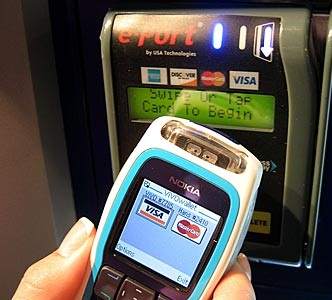There appear to be two very distinct groups of people when it comes to mobile payments.
The first group is the consumer who loves the idea of simply tapping their phone to make purchases at the point of sale, along with the opportunity for exclusive discounts and custom apps for extensive reporting and record keeping.

That group appears to be around one-fourth to one-third of American consumers. According to a recent study from the Auriemma Consulting Group (ACG), 30% of US mobile users would be willing to upgrade their phone for the sole purpose of gaining Near Field Communication (NFC) payment technology.
And in fact, nearly a quarter (23%) said they’d be willing to switch carriers for the added functionality. That’s a significant number considering the cost and hassle of switching phones or carriers.
But on the flip side, what about the other 70%? Of those who said they have no desire to use mobile payments, 73% said they had security concerns. In reality, of course, mobile payments are poised to be even safer than credit cards or cash because, depending on the platform, users need to go from everything to entering a password to authenticating their fingerprint before the phone’s NFC technology has any function.
Compare that to sliding a credit card, and the security concern is just a lack of knowledge or an inability to accept change.
The other leading cause, though, is that consumers have a “very high” level of satisfaction with their current payment method. 66% of those who are uninterested in mobile payments cited that as a reason why. For many, the idea of tapping a phone is not that much of an advantage over swiping a credit card.
Again, these numbers will probably change over time as consumers learn the sheer power and flexibility of having all their payment methods stored on one highly secure platform that you have with you virtually at all times.
It also comes down to the merchant. ACG managing director Patricia Sahm said, “Traditional, plastic-based payments remain an effective, efficient, and convenient way to conduct purchase transactions. The appeal of using new technology is significant, but merchant acceptance must be widespread in order for it to be adopted widely.”






